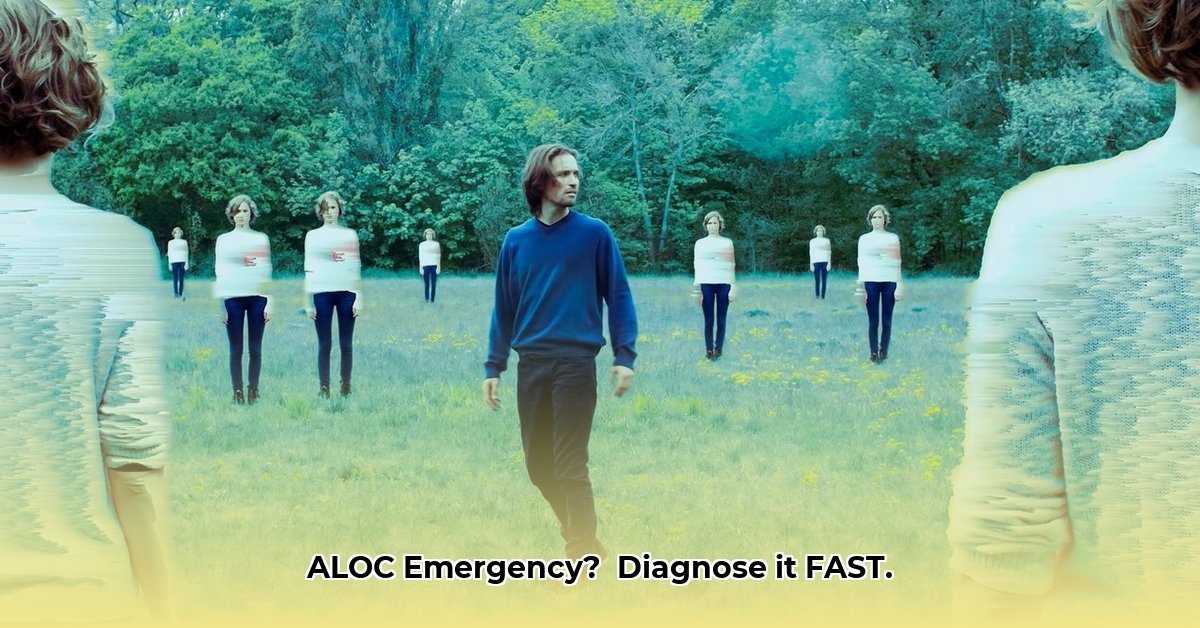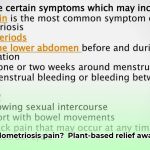ALOC: A Quick Diagnosis Guide
Let’s talk about ALOC – Altered Level of Consciousness. It’s a serious medical situation, not a single diagnosis, but a broad term for when someone’s awareness and responsiveness are off. Think of it like a dimmer switch for your brain – it can be slightly dimmed, or completely dark. Spotting this change quickly is crucial because the underlying reasons can be life-threatening – from simple dehydration to a stroke or severe head injury. The faster we act, the better the chances of a positive outcome.
This underscores the importance of rapidly recognizing and responding to ALOC, as the underlying causes can range from treatable conditions to life-threatening emergencies requiring immediate intervention.
Recognizing ALOC: Those First Crucial Steps
The very first thing you do is crucial. We use a systematic approach:
Step 1: ABCDEs – The Life-Saving Basics
This is your priority: Airway, Breathing, Circulation, Disability, Exposure. Is the person breathing? Do they have a pulse? These are your immediate concerns. Address any immediate life threats first. Fix the airway, support breathing, and check for circulation issues before moving on. You’ll also want to check for any obvious injuries (Disability) and look for anything else that might be contributing to the problem (Exposure – is the person cold, wet, etc.?).
Step 2: Using the GCS and AVPU Scales – Measuring Consciousness
The Glasgow Coma Scale (GCS) and the AVPU scale (Alert, Verbal, Pain, Unresponsive) are like measuring sticks for consciousness. They give you objective numbers to track changes and communicate clearly with your team. The higher the GCS score, the better the patient’s level of consciousness. AVPU is simpler to use quickly; if you can’t get a GCS right away, AVPU will still tell you the general condition.
Step 3: Getting the Story – Clues from Others
If possible, talk to family, friends, or anyone who knows the person. Sometimes even small details – did they take any medications, did they hit their head, were they acting unusually before this? – can be critical clues. Every piece of information helps.
What Could Be Causing This? Unraveling the Possibilities
This is where things get a little like detective work. Many things can cause ALOC:
- Metabolic Mayhem: Low blood sugar (hypoglycemia), electrolyte imbalances (like too much or too little sodium), or severe dehydration can all cloud the mind.
- Brain Trouble: Strokes, seizures, head injuries, infections like meningitis or encephalitis – these are serious problems that need immediate attention.
- Toxins and Poisons: Drug overdoses, alcohol poisoning, or exposure to other harmful substances are all significant possibilities.
- Infections: Sometimes serious infections can cause confusion and altered mental status. Pneumonia or a urinary tract infection, especially in elderly patients, can present with ALOC.
- Heart and Lung Issues: Problems with the heart or lungs can have indirect effects on the brain; a lack of oxygen to the brain will quickly cause changes in consciousness. Conditions like congestive heart failure, myocardial infarction, or pulmonary embolism can lead to hypoxia and ALOC.
- Environmental Factors: Hypothermia or hyperthermia can also significantly impact mental status.
We use a process of elimination – and a good dose of medical knowledge – to figure out what’s most likely going on.
Action Plan: What Different Healthcare Professionals Do
Here’s a quick breakdown of what different healthcare providers should do:
| Provider Type | Immediate Actions | Longer-Term Actions |
|---|---|---|
| Paramedics/EMTs | Rapid assessment (ABCDEs, GCS/AVPU); start life support if needed; quick transport to hospital. | Ongoing training on the latest ALOC management and advanced life support techniques. |
| Emergency Physicians | Detailed neurological exam; advanced imaging (like CT or MRI scans); treat based on suspected cause. | Work with specialists; review treatment strategies; participate in research. |
| Nurses | Closely monitor vital signs and neurological status; detailed record-keeping; give medications as ordered; administer prescribed treatments. | Stay up-to-date on the latest ALOC management guidelines. |
The Challenges: Why It Can Be Tricky
Even with all the tools and guidelines, diagnosing ALOC can be tricky. Different medical professionals may have slightly different approaches, and symptoms can overlap. Sometimes, figuring out the exact cause takes time and several tests. Early intervention is key – the faster we find the problem, the better the chance of a good outcome.
Effective teamwork and communication skills are instrumental in navigating diagnostic ambiguities and delivering optimal patient care, especially in complex cases of ALOC.
ALOC: The Ongoing Story
Research into ALOC is constantly evolving. New diagnostic tools and treatments are always being developed. Keeping up with the latest information and always looking for ways to improve is essential for anyone working in this field. There’s still much to learn, but by working together and staying informed, we can continue to improve care for patients experiencing ALOC.
How to Differentiate Altered Level of Consciousness Causes Using a Rapid Neurological Exam
Key Takeaways:
- Rapid neurological exams are crucial for swiftly identifying the underlying cause of altered level of consciousness (ALOC).
- Combining objective measurements with subjective observations enhances diagnostic accuracy.
- Immediate intervention is critical in ALOC cases to improve patient outcomes.
- Standardized tools such as the Glasgow Coma Scale (GCS) and AVPU scale aid in assessment, but clinical judgment remains paramount.
- Collaboration among healthcare professionals is essential for effective management.
Step-by-Step Neurological Assessment for ALOC
A patient presents with altered LOC. What’s your next move? A rapid neurological exam is your key. This isn’t just about ticking boxes; it’s about piecing together a puzzle to diagnose and treat. Here’s your guide:
Step 1: Initial Assessment (ABCDE)
First, address life-threatening issues:
- Airway: Is the airway patent? Look, listen, and feel for adequate air exchange.
- Breathing: Assess respiratory rate and effort. Is it labored, shallow, or absent? Check oxygen saturation with a pulse oximeter.
- Circulation: Check pulse, blood pressure, and skin color for signs of shock such as pallor, cyanosis, or diaphoresis.
- Disability: This is where how to differentiate altered level of consciousness causes using a rapid neurological exam becomes critical. Quickly assess LOC using the AVPU scale (Alert, Verbal, Pain, Unresponsive). Then, use the Glasgow Coma Scale (GCS) to quantify neurological impairment––the lower the score, the more severe the impairment.
- Exposure: Examine the patient completely. Look for injuries, signs of infection (rashes, wounds), or other clues like medical alert bracelets. Check the patient’s temperature.
Step 2: Neurological Examination
This is where you’ll gather detailed neurological information. Think:
- Mental Status: Orientation to person, place, and time. Memory (ask about recent events). Cognitive function (can the patient follow simple commands?). Is there confusion, disorientation, or agitation?
- Cranial Nerves: Assess pupil size and reactivity, eye movements, facial symmetry, hearing, and swallowing. Are pupils equal, round, and reactive to light and accommodation (PERRLA)? Note any asymmetry, ptosis (drooping eyelid), or nystagmus (involuntary eye movements). Test facial sensation and motor function (smile, frown).
- Motor Function: Assess strength in all four extremities. Tone (normal, increased, decreased). Coordination (finger-to-nose testing). Look for abnormal posturing (decorticate or decerebrate). Are movements symmetrical? Any weakness (hemiparesis)?
- Sensory Function: Test light touch, pain, and temperature sensation in all four extremities. Is sensation intact? Any numbness (paresthesia) or tingling?
- Reflexes: Check deep tendon reflexes (biceps, triceps, brachioradialis, patellar, Achilles). Grade reflexes on a scale of 0-4+ (0=absent, 2+=normal, 4+=hyperactive). Check plantar reflexes (Babinski sign – dorsiflexion of the big toe, which is abnormal in adults). Are reflexes normal, hyperreflexive, hyporeflexive, or absent?
Step 3: Differential Diagnosis
Based on your findings, consider potential causes:
- Hypoxia: Low oxygen levels. Check oxygen saturation and arterial blood gases (ABGs).
- Ischemia: Reduced blood flow to the brain (stroke or transient ischemic attack – TIA). Look for unilateral weakness, speech deficits, or visual disturbances.
- Traumatic Brain Injury (TBI): Concussion or more severe head trauma. Assess for scalp lacerations, skull fractures, or signs of increased intracranial pressure (ICP).
- Infection: Meningitis, encephalitis. Look for fever, stiff neck (nuchal rigidity), and headache.
- Seizure: Post-ictal state. Patients may be confused and disoriented after a seizure. Look for tongue biting or incontinence.
- **Metabolic
- Plant-based Diet Colitis Remission: Success Stories - December 18, 2025
- Plant Based Diet Breast Cancer: Research-Based Benefits - December 16, 2025
- Plant-Based Diet Ulcerative Colitis Remission: Proven Benefits - December 15, 2025










